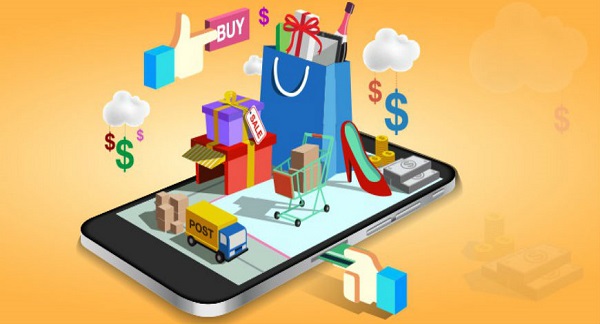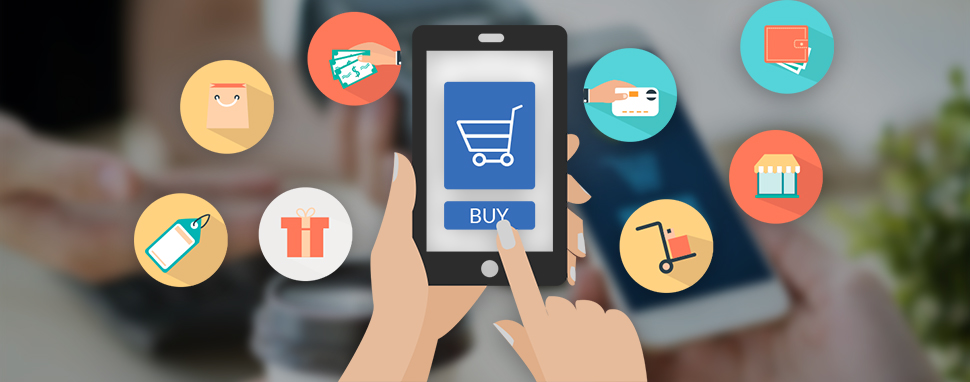Smartphones and tablets have become a dominant (and inseparable) part of our daily lives. Even if we forget to wear sunscreen before stepping out, we absolutely cannot forget our smartphones. As a result, mobile commerce is on the rise.
What is Mobile Commerce?
Typically, the buying and selling of products with the help of mobile phones without having to access desktops and laptops are known as mobile commerce. One fine example can be the rise of mobile wallets like Google Pay and PayPal that facilitate transactions without having to take out the physical card and input the card number and expiration date.

M-Commerce Trends in 2021
We’ve curated 5 amazing m-commerce trends that you need to look for and leverage in your business strategy in 2021.
Shopping from Mobile Apps
With more and more consumers owning mobile phones Shopify owners have started developing mobile shopping apps that streamline a better customer experience. 78% of users will want to access a store from a mobile app rather than a mobile website. 2021 has become the year of mobile shopping and to gain success in this space you need to think beyond having a mobile-friendly website. Also, with the growth of mobile wallets like Google Pay, PayPal and Apple Pay the use of physical cards to make payments has considerably declined. If you do not want to lag behind your competitors it is better to develop an e-commerce mobile app and belong to the shelf of early adapters.
Social Commerce

You must be aware that social media is no longer a place of leisure but a shoppable destination (and you’re using it to promote your e-commerce business). That means consumers can buy directly from the app itself without having to browse the website or redirecting to the product page (that becomes painful at times). Social commerce is relatively new and has a huge role in eliminating consumer pain points in the conversion process. In other words, since there is no hassle to navigate between the social posts and checkout pages, it leads to higher conversion.
Augmented Reality

The last thing a consumer will want to do is purchase a couch only to find out that it does not fit within the perimeters of their living room. To eliminate these pain points AI has brought forward Augmented Reality, by which consumers can try out products visually before purchase. The number of mobile AR users is expected to reach over 1.73 billion by 2024. Witnessing the potential of such lucrative technology brands have already started leveraging it to provide a seamless customer experience.
Voice Commerce
Another technology that started with commanding voice assistants to search for something online and playing their favorite music has now upgraded to shopping assistants. 2021 will witness brands investing in voice-based navigation in websites and apps by which consumers can complete purchases through voice commands without having to switch between channels.
Mobile Chatbots
Isn’t it frustrating to call the support center or write an email to get your issues resolved? What’s more- you have to wait for long hours to (actually) get the problem resolved. But that is no longer the norm because Chatbots are here. AI-powered bots providing a seamless customer experience 24/7. They also help in recommending new products, notifying customers about Wishlist and abandoned carts, and provide room for improvement in customer experience. In 2020, 41.3% of consumers said that they used chatbots for purchases. An amazing technology that you must leverage to promote brand awareness and boost sales.

M-Commerce Statistics
Since 2016, m-commerce has seen an average increase of 33.8% each year (jmango360)
76% of consumers shop on mobile devices because it saves time (Dynamic Yield)
Mobile app users make twice as many purchases as mobile website users (Mobile Commerce Report 2019)
70% of mobile searched lead to action within an hour (Forbes)
The Global Mobile Wallet market size is expected to reach $3142.2 Billion by 2022 (Zion Market Research)
Global M-commerce is growing at 29% compared to the e-commerce growth rate of 22% (Statista)


